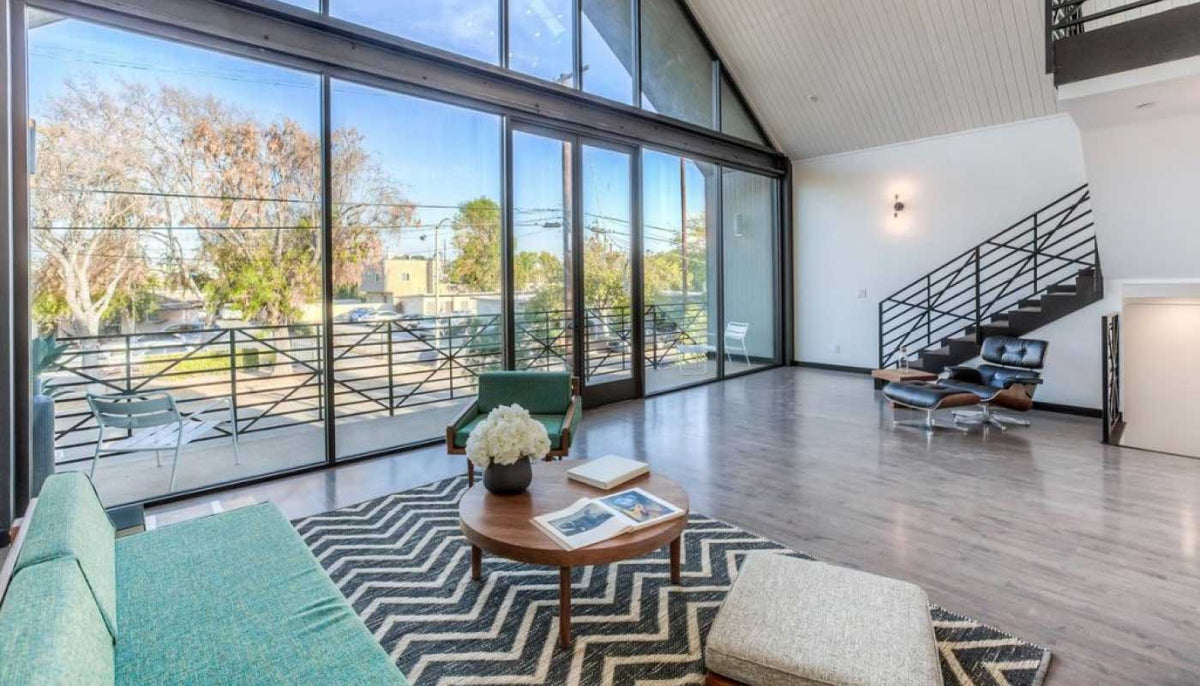
How to Soundproof Your Hardwood Floors
|
|
Time to read 4 min
|
|
Time to read 4 min
Hardwood floors are a popular choice for many homeowners because of their classic beauty and excellent durability. Despite all their benefits, the main downside to hardwood floors is that they don’t absorb sound very well. Even if your household doesn’t have pets or children, the simple act of walking across the floor in shoes is sometimes enough to disturb other people in the home. However, with the proper soundproofing techniques, you can minimize the amount of noise your hardwood floors make and enjoy them even more.
If you want to know how to soundproof your gorgeous chestnut hardwood flooring, it first helps to know the different types of noises. You can classify noises into two categories: airborne or impact. Airborne noises, which are also sometimes called ambient noises, are sounds transmitted through the air before they pass through walls, ceilings, or floors. Examples of airborne noises include a radio or television playing, people talking, or a telephone ringing. The best way to deal with airborne noise is to use sound-absorbing material, such as fiber insulation, inside cavities in the floor and ceiling.
Impact noises are caused when one object makes direct contact with another object. Examples can include someone walking or running on the floor or someone dropping an object on the floor. The sound from an impact noise travels differently from airborne because the impact itself creates vibrations in the structure of the home, such as the beams and wood joists that connect the floors, ceilings, and walls.
Because of this difference in the way impact noise travels, reducing this noise is more difficult. The best way to reduce impact noise in a home is to separate the materials that are normally connected to each other. In the floor, this means installing a flexible and durable subfloor beneath the floor covering.
The best way to reduce either type of noise is to do so as close to the source as possible. Therefore, if the hardwood floors are in the upstairs part of your house and you have access to them, you’ll get better results by treating the upstairs floor rather than treating the downstairs ceiling.
One way you can soundproof your hardwood floors is by installing the flooring with a resilient underlayment and damping compound. The resilient underlayment separates the construction materials, and the damping compound helps to further disperse sound energy. The damping compound is especially important when dealing with lower frequencies that an underlayment can’t absorb.
When choosing a resilient underlayment, there are several material options available, including fiber, rubber, foam, and cork. One of the best choices for absorbing sound is a shredded rubber mat. It’s heavier than cork or foam, which gives it extra soundproofing abilities.
As long as your subfloor isn’t too thick and is made of a material you can screw into, you can often apply the damping compound directly to the existing subfloor layer. Since the damping compound needs to exist between two hard surfaces to do its job correctly, you must make sure it has a firm layer above it. A cement board is an acceptable choice. However, if the thickness isn’t a concern and you want even more sound isolation, consider a thicker sheet of oriented strand board or medium-density fiberboard.
When you’re ready to install your hardwood floors on top of the underlayment, you want to do so as a floating raft. This means you won’t attach the hardwood floors to the layer underneath with any type of screws, nails, or adhesive. You also want to leave a gap between the edge of the floor and the walls. You can then fill this gap with acoustic sealant. The gap acts as a separator and helps reduce impact noise that carries through the building structure.
While underlayment is ideal for hardwood floors that haven’t been installed yet, if you already have hardwood floors down and you’re looking to soundproof them, there are several ways to do this. Carpet and pad is the most effective way to reduce noise on your floors. The thicker you can get your carpet and pad, the better they will work at absorbing noise. Carpet and pad will dissipate noise before it even has a chance to enter the structure and carry to other parts of the house.
Of course, installing a carpet and pad means covering your hardwood floors. If you don’t want to give up enjoying the beauty of your hardwood just to cut down on the noise, you have a few other options. Thick area rugs will work to reduce some noise, and they won’t completely cover your floors. You can also use fabric in other spots around your house, such as fabric wall hangings, tapestries, fabric-covered wall panels, and thick drapes, to absorb unwanted airborne sounds.
Whether you’re considering hardwood floors for an apartment complex or a rental unit in your home, it’s important to note that building codes throughout the United States have certain soundproof requirements between floors. These codes are designed to create a standard of privacy and to make living conditions more comfortable for everyone.
While some building code inspection departments require completed field tests before they’ll issue a certificate of occupancy, others do not. The departments that don’t require field tests typically rely on the specifications and design recommendations from the architect. Purchasing a multi-family unit or renovating your home to create a rental space is a significant investment, and you want to make sure you’re following all the requirements. Take time to understand the regulations and recommendations before you start a project so you don’t waste any time or money doing it incorrectly.
Hardwood floors are easy to maintain and add exceptional style to your home. If you want to enjoy the beauty of your floors and yet control the noise they produce, these tips on how to soundproof your hardwood floors will help.